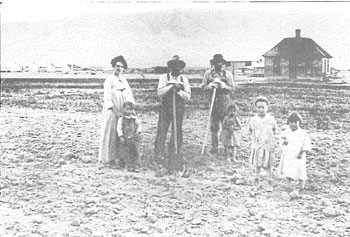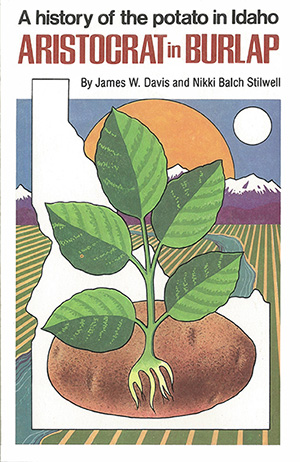 Early Utah and Idaho settlers lived simply, worked hard
Early Utah and Idaho settlers lived simply, worked hard
The first significant irrigation project in the West developed as a grim struggle for survival and, interestingly enough, the water was diverted to irrigate potatoes. In 1847, the first band of Mormon pioneers, having traveled many miles to a remote valley, built a small dam across City Creek near the present site of the Mormon Temple in Salt Lake City. They succeeded in diverting sufficient water to saturate some five acres of land. Before the day was over, they had planted their potatoes in an effort to preserve the seed.
This single event was the beginning of Western irrigation as it is practiced today.
The Mormon people by nature and by church rule operated as a cooperative community. The Mormon system of issuing shares for water and attaching water rights to the land are basic to irrigation control today. The development of irrigation in Utah by the Mormons remained for some years the only substantial private irrigation enterprise in the western states. Until 1870, no large amounts of land were under irrigation except 154,000 acres reported cultivated by Mormon settlers in 1865.
In Idaho, the Mormon communities were not so concentrated and the efforts of individual farmers to put water on their land were too costly. Adding to the problems was a lack of technical know-how. Land easy to irrigate next to natural waterways was quickly settled, but the many arid acres beyond proved a unique challenge for the Idaho farmer.
Perhaps the most important action taken nationally in behalf of irrigation in Idaho was the Carey Act of August 1894. Under the Carey Act, the so-called public land states with desert lands were offered one million federal acres each, provided they would cause the granted lands to be irrigated.
Idaho benefited from the Carey Act far more than did any other state-about 60% of all the lands irrigated in the United States under the Carey Act are in Idaho.
The construction of the Carey Act was actually threefold and included three contracts: first, involving the federal government and the state; second, the state and the construction company; and finally, the construction company and the settlers on the project. It was a unique scheme never before attempted in the United States whereby private enterprise would construct the irrigation works under state supervision and initially finance projects by mortgaging its equity in the project, issuing bonds or assigning its contracts with the settlers for the purchase of water rights. The ultimate profit would be derived from the sale of perpetual water rights to settlers on the project.


 Early Utah and Idaho settlers lived simply, worked hard
Early Utah and Idaho settlers lived simply, worked hard